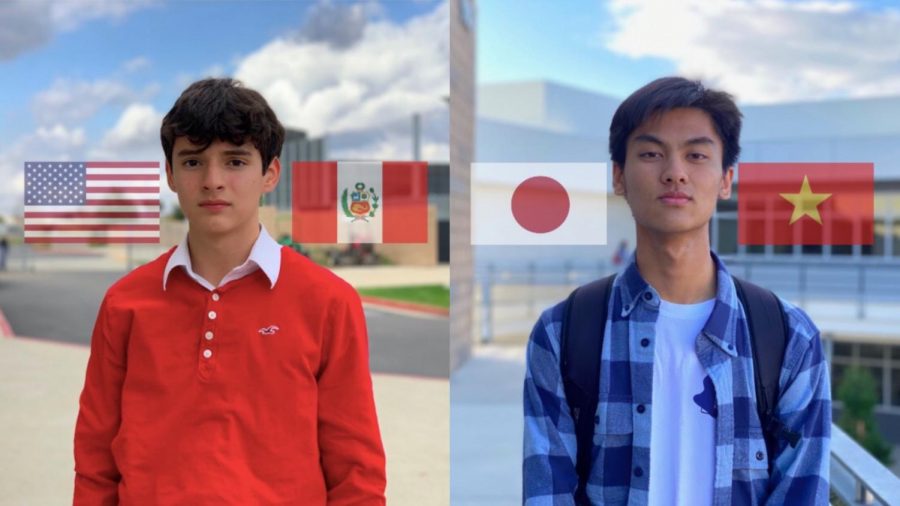Learning to See Two Backgrounds As One
Stocks and Sugita both value the flexibility and advantages of speaking a second language due to their multicultural households. Stocks speaks Spanish, while Sugita speaks Japanese.
Hearing the last names of Japanese-American and Vietnamese senior Kyle Sugita and Peruvian and Caucasian sophomore Chris Stocks yields a stark contrast in reaction from the frequent “Kims” and “Zhangs” scattered throughout the backs of Irvine yearbooks. Both multiethnic, Sugita and Stocks can attest to the feeling of lacking a strong cultural community to house their wavering identities when growing up.
Sugita’s mother sought refuge in the United States during the Vietnam War while his father’s side immigrated in 1918, before World War II. Being Vietnamese did not pose a challenge because of its strong ethnic presence at his elementary school, Sugita said, but being Japanese did.
“My middle name is Hiroshi,” Sugita said. “It’s so associated with the bombing of Hiroshima. For years, I didn’t know how to navigate the familial and historical conflict that I or my family was never a part of but had to take responsibility for.”
Sugita had wholeheartedly accepted his Vietnamese culture early on, in contrast to his Japanese side. However, the gap between cultures began to close as he found a strong Japanese community at the Orange County Buddhist Church.
Stocks, on the other hand, sees his biculturality manifest in the form of family gatherings during the holiday season. On Dec. 24, he has dinner with his Caucasian family, and on Dec. 25 he celebrates Christmas with his Peruvian side, or vice versa.
“One is more of a calm, quiet and sophisticated dinner, and the other is a big potluck party with music playing and whatnot,” Stocks said.
For Stocks, biculturality has also brought a deeper insight into his mother’s life. Having immigrated from Peru to the United States, Stocks’ mother faced a more expensive and challenging journey than a stabilized American family with roots would have, he said.
“I would say the Latino family is more strict than the white family,” Stocks said. “My mother, who I live with, is very hard on me sometimes, and I respect it. It’s made me just want to work harder and chase after my goals because I have a reason to.”
Though the racial tensions and identity issues associated with biculturality can make it difficult to fully embrace, Sugita and Stocks have grown to appreciate its benefits as well.
“It’s kind of a blessing to get two perspectives, especially two that are kind of underrepresented in this particular community,” Sugita said. “If anything, it gives me a kind of human advantage because it forced me to find myself before most of my peers knew what an identity was.”
Your donation will support the student journalists of Portola High School. Your contribution will allow us to purchase equipment and cover our annual website hosting costs.

Tiffany Wu is your 2019-2020 Co-News Editor! She is most excited to insert ads on Print Days. In her spare time, she can be found browsing memes and eating...




